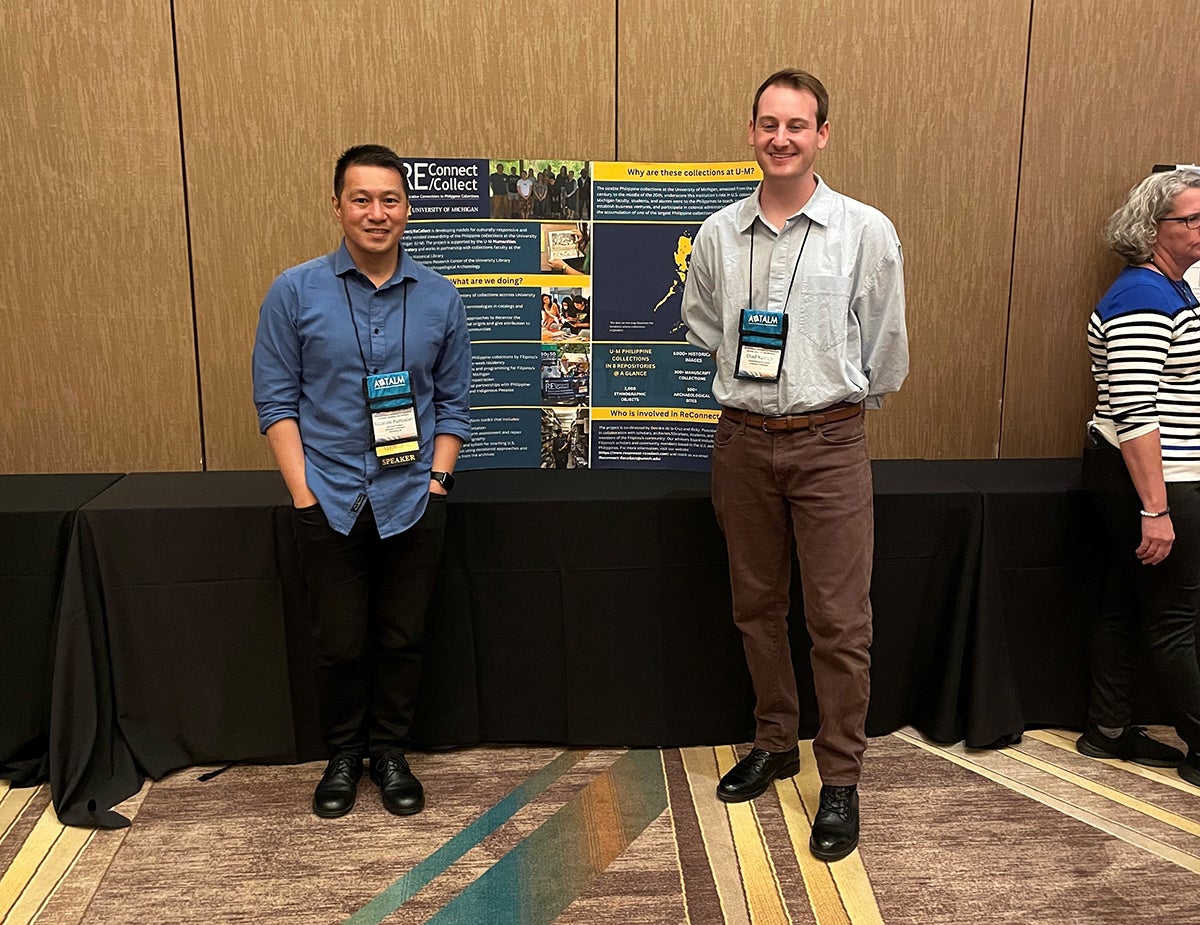A handful of graduate students have supported more than one Collaboratory Project Grant during their studies at the University of Michigan. One such collaborator is Chad Kamen, a second year student in the School of Information pursuing his Master of Science in Information (MSI). We asked Kamen for insights on his work.
How did you become involved with two Humanities Collaboratory projects?
Last fall, I was lucky to partner with my friend Mia Glionna on a course project about histories of the fight for fair housing in Washtenaw County. We reached out to Professor Rob Goodspeed, whose work with Justice Indeed we had come across. He responded generously and introduced Mia and I to the Black Washtenaw County (BWC) project, helping us conceptualize how our work could pair with that of the BWC team.
Alongside this, I received an email that there was a research position open with Professor Ricky Punzalan. As someone who had quite literally followed Ricky’s work to U-M, I was ecstatic! But the position’s focus – delving into materials related to the Philippines – was completely outside of my knowledge base. I reached out to Ricky, and I have so much gratitude that he met with me and ultimately encouraged me to apply for the ReConnect/ReCollect (RC/RC) project.
What aspects of the Black Washtenaw County project have you worked on?
I largely focused on development of our internal website. I partnered again with Mia – who is truly such a luminary – on thinking through how to design a virtual space that reflects the values and shared visions of the BWC team. This platform, which is now being rolled out, includes spaces to communally archive project documents, provide updates, plan meetings, and continue developing our collective purposes (as team member Yodit Mesfin Johnson once offered, our “exists to” statements). We were part of a truly amazing Visual Identity and Design working group that oversaw this work. My BWC teammates and our PIs offered such generosity of spirit, time, energy, and knowledge, they have forever changed how I think about collaborative work.
What is your role on the ReConnect/ReCollect project?
At first, I worked for the Bentley Historical Library (BHL), supported by a grant from the Institute for Museum and Library Services, surveying their Philippine collections. I also held an internship at the BHL, in which I helped plan their participation in our two-week Artist Residency and conducted a base-level analysis of their Philippine collection descriptions. Throughout this time, I received incredible mentorship and guidance from team member and BHL interim director Nancy Bartlett. Continuing with RC/RC in a Research Associate position, I’ve collaborated with Robert Diaz on our team’s effort to compile and define harmful terms pertaining to histories of the Philippines, as well as a potential method for automating their discovery in archival descriptions.
With the start of the project’s second year, I stepped into a project coordinator role. This new position gives me the opportunity to design a weekly workshop for our illustrious and inspiring new cohort of research assistants focused on reparative description. I also stay involved with our efforts to identify harmful terms, facilitate meetings for the full group, and help plan forms of programming around the collections.
From your studies in SI and your experience on these projects, what does it mean for archives to be community-centered?
While I am quite new to archives, I recognize how vital it is for archives to build enduring and non-transactional relationships with the people they represent. To do this requires the steps we are going through in both projects: the revelatory, necessary, and vulnerable process of building trust. When you have a shared present, you can work towards shared futures.
Can you share a memorable experience?
There are so many! It may seem small, but I recently got to utilize a powerful reflective exercise I learned from Bailey Sullivan, who prompted us to map out how we arrived at our work with the BWC. The experience of drawing my journey and seeing that of others was so impactful that for months I found myself returning to the exercise. Now that I organize workshops for RC/RC, I knew I wanted to pull on the insights Bailey brought into my life. I could have never imagined how amazing it would be the second time around! There is something so special and grounding about an environment where you feel safe enough to bravely offer your own story.
“For the Collaboratory to offer me the chance to learn from others about how to facilitate such an exercise and then practice this skill with another group of people is truly a gift.”
How does your Collaboratory work fit into the bigger picture of your grad career?
I got to attend and present at my first conference this past month, the International Conference of Indigenous Archives, Libraries, and Museums. I also was able to learn from others doing similar work, making friends with whom I hope I can stay in contact for many years to come.
From a bird’s eye view, my dream is to stay involved in this form of collaborative work for the rest of my life. I am immensely inspired by the idea of continuing to facilitate discussions about archives with students, faculty, and non-institutional knowledge bearers. There is nothing more fulfilling to me than designing educational opportunities for people to bear witness to themselves, others, and the histories that shape us all!




